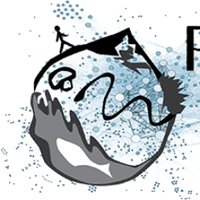Once upon a time in the far south: Influence of local drivers and functional traits on plant invasion in the harsh sub‐Antarctic islands
This article has been Reviewed by the following groups
Discuss this preprint
Start a discussion What are Sciety discussions?Listed in
- Evaluated articles (Peer Community in Ecology)
Abstract
Aim
Here, we aim to: (a) investigate the local effect of environmental and anthropogenic factors on alien plant invasion in sub‐Antarctic islands; and (b) explore whether and how functional traits affect alien species dependence on anthropogenic factors in these environments.
Location
Possession Island, Crozet archipelago (French sub‐Antarctic islands).
Methods
Single‐species distribution models were used to explore the effect of high‐resolution topoclimatic and human‐related variables on the occurrence of six alien plants colonizing French sub‐Antarctic islands. Furthermore, plant responses to human‐related variables and the effect of those variables in interaction with plant traits were analysed by means of a multi‐species distribution model. This allowed identifying functional features mediating the influence of human activities on the occurrence probability of alien plant species.
Results
We observed two main invasion patterns: (a) species predicted to occur close to the introduction sites, whose occurrence probability appeared to be strongly affected by anthropogenic factors; and (b) species predicted to occur nearly everywhere on Possession Island, except in areas featuring particularly harsh climatic conditions. Differences in the influence of human‐related variables on the occurrence of the alien species were mostly related to their life history, plant height and residence time, with perennial and low‐statured species introduced earlier appearing less dependent on human‐induced dispersal and disturbance.
Conclusions
We conclude that both topoclimatic and anthropogenic factors affect plant invasion on sub‐Antarctic islands. Specifically, species predicted to occur close to their introduction sites appear much more dependent on human presence and activity, potentially due to the lack of key functional traits allowing them to spread successfully across Possession Island under the harsh sub‐Antarctic climate. Yet, particularly severe abiotic conditions are a major constraint which equally limits the occurrence of all alien plants, irrespective of their dependence on anthropogenic factors.


